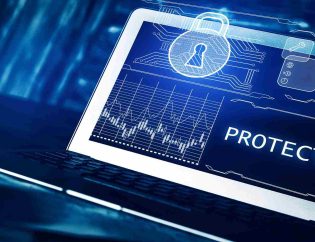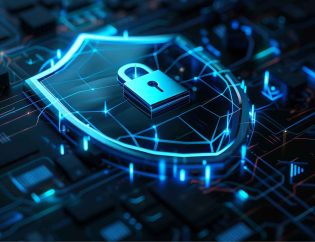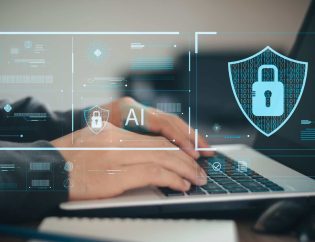
Introduction
How does endpoint security work? In today’s interconnected digital environment, protecting endpoints such as laptops, desktops and mobile devices is critical. Endpoint security involves a series of practices and technologies designed to secure these devices from cyber threats. This article explores how endpoint security functions and its significance in safeguarding your organization’s data.
How Does Endpoint Security Work?
How does endpoint security work? Endpoint security employs a combination of technologies and practices to protect devices connected to a network. It typically involves the following key components:
Real-Time Monitoring:
Endpoint security solutions continuously monitor devices for suspicious activities, ensuring that potential threats are identified and addressed promptly.
Threat Detection:
These solutions utilize advanced algorithms and threat intelligence to detect malware, ransomware and other malicious activities.
Incident Response:
In the event of a security breach, endpoint security solutions provide tools for incident response, allowing organizations to quickly mitigate damage.
Data Encryption:
Sensitive information is often encrypted to ensure that even if data is accessed without authorization, it remains unreadable.
By understanding how endpoint security works, organizations can make informed decisions about the tools and strategies they need to protect their digital assets.
How Endpoint Protection Works
How endpoint protection works involves several layers of security measures designed to safeguard devices. Here are some key features:
Antivirus and Anti-Malware:
These programs detect and remove malicious software, preventing it from infecting devices.
Firewalls:
Endpoint protection solutions include firewalls that monitor incoming and outgoing traffic, blocking unauthorized access attempts.
User Authentication:
Secure access protocols ensure that only authorized users can access devices and sensitive information.
Bullet Points on Key Features:
Regular Updates:
Ensures software and security patches are up to date to protect against the latest threats.
Behavioral Analysis:
Monitors user and device behavior to identify anomalies that may indicate a security breach.
how does endpoint detection and response work?
How does endpoint detection and response work? This aspect of endpoint security focuses on identifying and responding to threats in real time. Endpoint detection and response (EDR) solutions collect and analyze data from endpoints to detect suspicious behavior.
EDR systems use advanced analytics to identify potential threats and provide insights into security incidents. Once a threat is detected, EDR tools help security teams respond swiftly, mitigating damage and reducing recovery time. This proactive approach is essential for maintaining a secure environment in an ever-evolving threat landscape.
How Enterprise Endpoint Protection Differs from Consumer Endpoint Protection?
Understanding how enterprise endpoint protection differs from consumer endpoint protection is crucial for businesses. Enterprise solutions are designed to meet the complex security needs of organizations, offering advanced features like centralized management, compliance reporting and integration with other security systems.
Consumer endpoint protection, on the other hand, typically provides basic security features suitable for individual users. While both types of solutions aim to protect against threats, enterprises require more robust options that can scale to meet the demands of their operations.
Key Differences:
Management:
Enterprise solutions offer centralized management, while consumer solutions are usually managed individually.
Features:
Enterprise protection includes advanced features tailored to organizational needs, whereas consumer solutions provide basic security.
How to Choose an Endpoint Security Tool
Choosing the right endpoint security tool is vital for effective protection. Here are some steps to consider:
Assess Your Needs:
Identify the specific threats your organization faces and the data that needs protection. This will guide your selection process.
Evaluate Solutions:
Research different endpoint security tools and compare their features. Look for vendors that provide solutions tailored to your industry.
Consider Scalability:
Ensure the tool can grow with your organization. As your business expands, you want security measures that adapt to new challenges.
Seek Expert Recommendations:
Consult with cybersecurity professionals to gain insights into the best solutions for your organization.
By following these steps, you can choose an endpoint security tool that effectively meets your business needs.
Endpoint security protects devices by monitoring, detecting and responding to threats in real-time, ensuring secure access, data protection and malware prevention across networks. #CyberSecurity #EndpointSecurity
— Hyper Secure (@HyperSecure) December 9, 2024
Customer Testimonial
“Since implementing Hyper Secure’s endpoint security solutions, our risk of cyber threats has decreased significantly. Their expert team and robust tools have transformed our security posture.”
— Jane Doe, IT Director
Conclusion
In conclusion, understanding how does endpoint security work is vital for protecting your organization’s data and devices. At Hyper Secure, an endpoint security company, we offer comprehensive endpoint security solutions designed to meet your specific needs. Our expertise ensures that your endpoints are secure, allowing you to focus on your core business operations without worrying about cyber threats.
FAQs
1. What is endpoint security?
Endpoint security protects devices connected to a network from cyber threats, ensuring the integrity of sensitive information.
2. How does endpoint security work?
Endpoint security works by monitoring devices, detecting threats and providing incident response capabilities to mitigate risks.
3. What is endpoint security software?
Endpoint security software includes applications that protect devices from malware, intrusions and data breaches.
4. Why is endpoint protection important?
Endpoint protection is essential to safeguard sensitive data, prevent unauthorized access and maintain operational continuity.
5. What features should I look for in endpoint security?
Key features include real-time monitoring, automated threat detection, incident response and user authentication.








